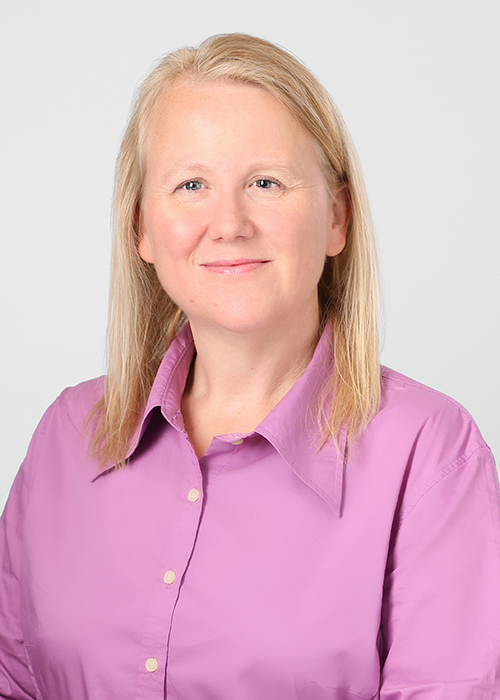
The day we have all been patiently waiting for has arrived: The Centers for Medicare & Medicaid Services (CMS) has released the newest version of the resident assessment instrument (RAI) manual. These revisions will go into effect on October 1, 2023, and we are all excited to learn what has changed and how those changes will impact our care communities.
These changes are related and derived from the Improving Medicare Post-Acute Care Transformation Act of 2014 (IMPACT Act of 2014). The purpose of the IMPACT Act is to standardize assessment items collected across all post-acute care settings. By standardizing these assessment items, we can track, plan, and compare data linked to quality across the many post-acute care settings.
One thing that RAI users will notice right away is that the manual is now gender neutral. Throughout its many examples, the RAI has been updated to reflect current regulations and best practices and provide clarification when needed. The changes are not unexpected, but they do provide much needed detail and clarification.
There is a clear trend to focus on the highest quality resident outcome and to set a strong resident-focused plan of care on admission that allows the resident’s voice to shine.
There are 10 sections of the minimum data set (MDS) that have had notable changes that may affect the processes your community has in place. They certainly all will require staff-specific training. Helping others to see the intent behind these changes will impact results. When staff understand the “why” behind what they are doing, the results are always more meaningful.
Notable MDS Changes
Sections A–D
Section A has a few notable changes that will require adjusting the initial interview process when a new resident is admitted. Some of these changes include adding new choices to the ethnicity and race questions, asking how transportation has affected the resident’s health care management, and adding more choices as to where the resident admitted from and where they will discharge to. Perhaps the most significant change to Section A is asking if a medication list was provided to the subsequent provider on discharge and in what form. This may have an impact on your community’s process, as in the past a resident would be sent home with a discharge packet and an appointment scheduled with their primary care provider (PCP) for follow-up. You now must provide the medication list directly to the provider and be able to prove you did.
Section B had only one major change, with the addition of question B1300: Health Literacy. This question has the MDS interviewer ask, “How often do you need to have someone help you when you read instructions, pamphlets, or other written material from your doctor or pharmacy?” This is a quality-of-life question, as poor health literacy can be a barrier between the provider and resident. Poor health literacy will also affect the resident’s ability to comprehend and follow plans of care. This will require a change in the current resident interview process.
Section D has a change in how we code the mood interview, a name change to the mood interview to reflect these coding changes, and new questions related to social isolation. The mood interview, formerly PHQ-9, is now referred to as PHQ-2 to 9. This refers to the change in the way you would code the interview after the top two questions are answered. The other addition to this section is D0700: Social Isolation. It asks the question, “How often do you feel lonely or isolated from those around you?” The bottom line for this section is that whoever does the interview in your community will need to be trained thoroughly using the RAI.
Sections GG–K
Section G is no longer a part of the RAI manual. However, pieces have been moved into Section GG. This includes the questions related to range of motion and mobility devices. While the coding items for the functional assessment in GG have not changed, CMS has provided much-needed clarification and updated definitions to allow for more accurate coding and to provide a truly accurate picture of the resident’s functional abilities. This should be a priority in training, as the impact on Patient-Driven Payment Model (PDPM) reimbursement could be substantial.
Section J had some changes to the pain interview, with new questions asking how pain affects the resident’s sleep and therapy. This will require a change in the interview process allowing for the additional questions.
Section K has received a face-lift. While the questions are the same, when you are looking for the information has changed. Instead of While a Resident and While Not a Resident in the last seven days, we will be looking at On Admission, While Not a Resident, While a Resident, and At Discharge. Obtaining the resident’s prior nutritional records will be more important than ever. Training your dietitian on the new look-back periods will need to be a priority prior to October 1.
Sections M–Q
Section M has a few clarification changes that may have a big impact on your quality measures, the first being “Skin changes at the end of life (SCALE), also referred to as Kennedy Terminal Ulcers (KTUs) and skin failure, are not primarily caused by pressure and are not coded in Section M.” Wound care teams will need to train to carefully document end-of-life wounds so that they can be omitted from coding on the MDS. This can improve quality measures for those residents/families not opting for hospice services. The other clarification change is defining where and when the MDS nurse should look to code wounds for new admissions. In the past, it was standard practice to use the first wound nurse visit or skin check after admission, not necessarily the admission notes, to code wounds on the admission MDS. The RAI now clarifies that “[a]t admission, code based on findings from the first skin assessment that is conducted on or after and as close to the admission as possible.” This would be the skin assessment done in the first head to toe on admit. If a wound is missed at this time, it appears that you will not be able to capture it as on admission. Training of admission nurses will be critical here.
Section N focuses on medications. CMS has added two new medication classes, Hypoglycemic and Antiplatelet medications. These come as no surprise, as they have been a focus of quality for some time.
The biggest change for Section N is that for each medication coded, you must document that an indication for use was noted in the record. Although there is no clarification if the indication needs to match the drug class at this time, it simply asks that an indication was noted. All providers will need to ensure all orders have an indication—although this is best practice, it is not always followed.
Section O has a big change for discharge assessments (see O0110: Special Treatments, Procedures, and Programs). It will add some work to these assessments, but overall should be easy to implement. Previously coded in two columns—While a Resident and While Not a Resident—this has been replaced with a three-column model that includes On Admission, While a Resident, and At Discharge. It is important to note you are no longer looking back into the hospital stay. On Admission is defined as the first three days of the skilled stay, While a Resident is after admission and within the last 14 days, and At Discharge is the last three days of the resident’s stay. This will be a completely new way to code this section, and education will be required from providers for success.
Section Q has added goal setting. You will now need to ask the resident what their overall goal for discharge is. By learning early in the process what the resident’s goals are, you can make sure their voice is heard, ensure the plan of care reflects their goals, and make certain that upon discharge you have met or exceeded them. Another addition is Q0620: Reason Referral to Local Contact Agency (LCA) Not Made. CMS wants to understand why we are not made to support our residents after discharge; CMS also wants to ensure comprehensive care planning to provide for the best possible outcome for the resident after they leave the community’s care. It also provides clarification as to what an LCA is. The focus here is continuity of care, supporting the resident during and after their stay to help prevent rehospitalizations.
Many significant revisions here are not unexpected. However, they will require you to change some processes to be able to capture all documentation needed to accurately complete the MDS. The MDS is a tool to help you drive the best plan of care with the highest quality outcomes for your residents. To achieve these goals, we, as providers, must prepare, act, and train so that we are ready come October 1. To ensure a smooth transition and accurate coding, providers should waste no time and begin focusing on educating team members and updating processes.
HDG Is Here to Help
At Health Dimensions Group (HDG), we understand the complexity of these changes and their potential impact. Please let us know if we can be of service to your organization as you anticipate these changes. HDG is prepared to assess your situation, provide review of your processes, and offer the level of guidance or service you need. For more information, please contact us at info@hdgi1.com or 763.537.5700.
Authored by:
 Veronica James, RN, RAC-CT
Veronica James, RN, RAC-CT
Vice President, Clinical Reimbursement

